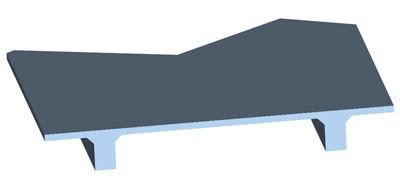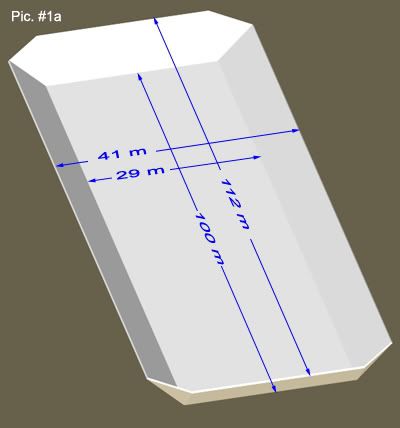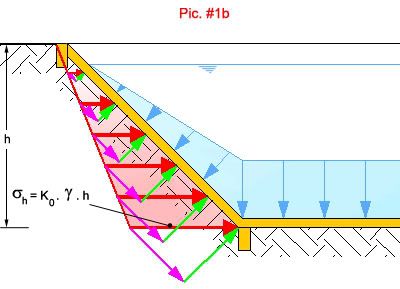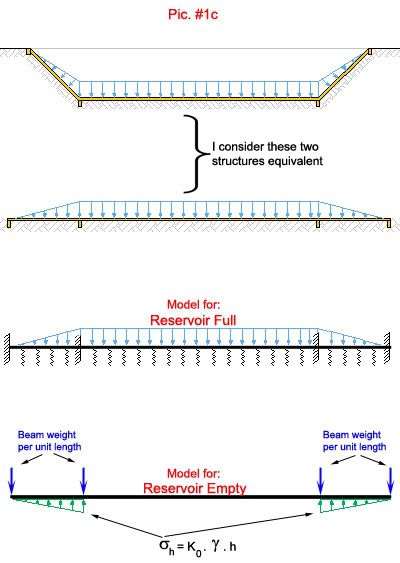Hi,
I have to design a rectangular concrete reservoir for containing sugar cane molasses/syrup (density=1500 Kg/m3).
Dimensions: length=100m, width=35m, depth=6m
Some of the project constraints are:
[ul][li]The walls must be of precast reinforced concrete panels. (no prestressing or post-tensioning, except as a very, very last resort)[/li]
[li]The reservoir can be fully or partially underground (see Pics. #2a-#2b and #3)

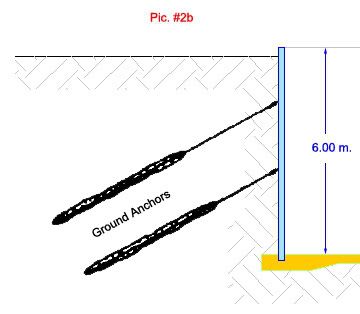
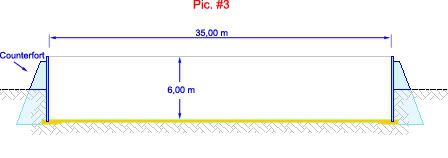 [/li]
[/li]
[li]The floor will be of poured concrete.[/li]
[li]The whole structure will be roofed.[/li]
[li]Walls and floor must be watertight.[/li]
[li]The jobsite is in a moderate seismic zone.[/li]
[li]Several smaller reservoirs instead of a huge one is not an option.[/li]
[li]Unlimited crane availability.[/li][/ul]
If poured concrete for the whole structure were allowed, then the easiest approach would be to implement sloped sides and treat the walls as inclined extensions to the floor. In fact, the reservoir could be thought of as a big slab on grade. See pic. #1 for the concept.
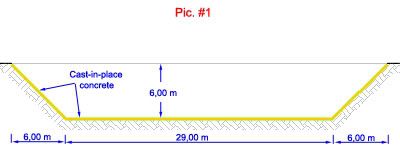
With that option out of consideration I have to fall back to other alternatives that contemplate vertical walls made of precast panels. Basically I'll have to stick with variations of the concepts depicted in Pics. #2a, #2b and #3.
There's also another alternative with a more elaborate panel with heel and toe, like the one manufactured by the Italian company Paver. See this page and the PDF here . Their products, however, are meant for grain storage.
I'd rather think of this structure not as a plain old rectangular tank, but as a long retaining wall whose worst load case is when the reservoir is empty. Prevention of wall overturning, translation and rotation are my biggest concerns (maybe the internal columns/beams for supporting the TT roof panels could serve as struts to prevent OT/trans./rot.?)
To sum up, I'm in the early stages of self brainstorming on this subject and, based on the experience of the members of this forum, would like to know opinions on the most efficient, safe and economic design I should focus on going forward, satisfying the constraints set above.
How would you tackle the desing of a reservoir like this one?.
Thanks.
I have to design a rectangular concrete reservoir for containing sugar cane molasses/syrup (density=1500 Kg/m3).
Dimensions: length=100m, width=35m, depth=6m
Some of the project constraints are:
[ul][li]The walls must be of precast reinforced concrete panels. (no prestressing or post-tensioning, except as a very, very last resort)[/li]
[li]The reservoir can be fully or partially underground (see Pics. #2a-#2b and #3)



[li]The floor will be of poured concrete.[/li]
[li]The whole structure will be roofed.[/li]
[li]Walls and floor must be watertight.[/li]
[li]The jobsite is in a moderate seismic zone.[/li]
[li]Several smaller reservoirs instead of a huge one is not an option.[/li]
[li]Unlimited crane availability.[/li][/ul]
If poured concrete for the whole structure were allowed, then the easiest approach would be to implement sloped sides and treat the walls as inclined extensions to the floor. In fact, the reservoir could be thought of as a big slab on grade. See pic. #1 for the concept.

With that option out of consideration I have to fall back to other alternatives that contemplate vertical walls made of precast panels. Basically I'll have to stick with variations of the concepts depicted in Pics. #2a, #2b and #3.
There's also another alternative with a more elaborate panel with heel and toe, like the one manufactured by the Italian company Paver. See this page and the PDF here . Their products, however, are meant for grain storage.
I'd rather think of this structure not as a plain old rectangular tank, but as a long retaining wall whose worst load case is when the reservoir is empty. Prevention of wall overturning, translation and rotation are my biggest concerns (maybe the internal columns/beams for supporting the TT roof panels could serve as struts to prevent OT/trans./rot.?)
To sum up, I'm in the early stages of self brainstorming on this subject and, based on the experience of the members of this forum, would like to know opinions on the most efficient, safe and economic design I should focus on going forward, satisfying the constraints set above.
How would you tackle the desing of a reservoir like this one?.
Thanks.

